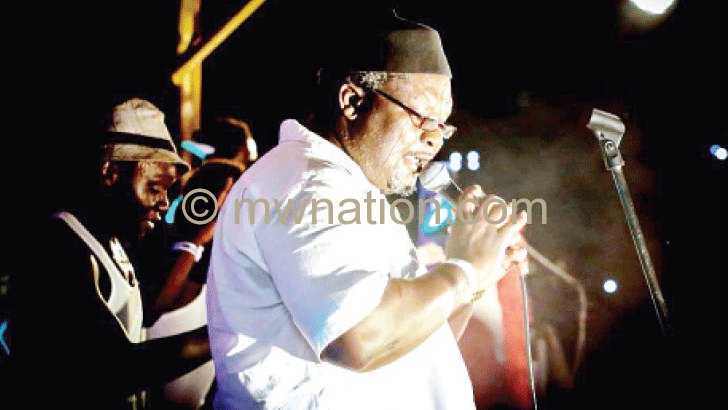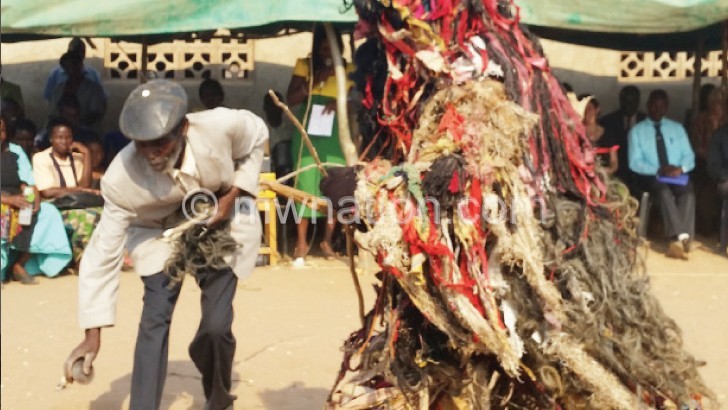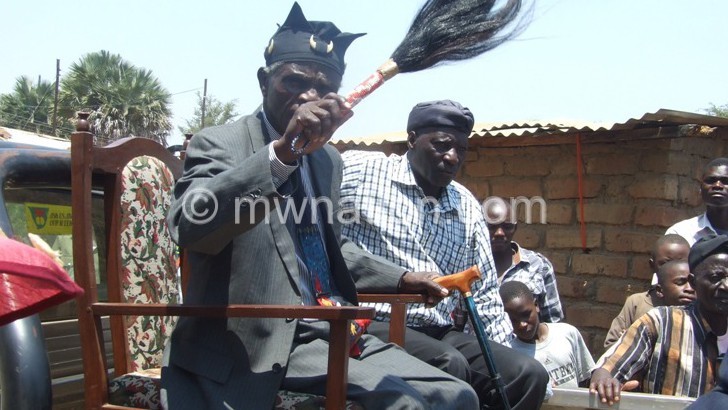One danceable healing ritual
 Exclusive to the Northern Region of Malawi, vimbuza is a traditional dance as well as a healing ritual.
Exclusive to the Northern Region of Malawi, vimbuza is a traditional dance as well as a healing ritual.
The mystic dance forms a popular form of entertainment in some parts of Rumphi, Mzimba and Karonga districts.
Although the dancer is perceived to be under the influence of spirits, the dance itself speaks volumes of Tumbuka culture right from its costume to the dancing antics.
Male performers wear a crown of feathers, called njukula while women tie a handkerchief around the temples.
The performers waistlines are garbed in goatskins,  known as madumbo, zamba or nyisi.
Kafunthula Mphande of Kamzati-Nyango Village in Mzimba has been dancing vimbuza since 1950. At 80, he thinks it all “madness†when the spirits of fallen relatives come knocking.
“When these spirits come, the dancer acts like any mad person,†argues Mphande, who claims to have healed over hundreds of people through the mystic dance.
A study conducted by Mzuzu University (Mzuni) literature lecturer, Professor Boston Soko, shows that apart from being a jive to appease the spirits, vimbuza is a ‘disease’ caused by the presence of spirits within an individual.
According to the study, there are no specific symptoms of the ‘disease’ because its causes are imbued with mystery.
But the essential point is that the ‘disease’ can appear in the form of somatic or mental problems, writes Soko.
Reads part of the findings: “The inflicted person is healed through undergoing a healing process in which the sick person sits on a mat placed in the middle of the hut. The audience stands or sits all round, leaving a small space behind the patient for a drummer.
“Later on, the drummer places a drum above the head of the patient, who is in a standing position, and the diviners use plants to ‘enforce’ the ‘descent’ of genies.â€
 The study was conducted with funding from Unesco under the ‘Vimbuza Healing Dance Safeguarding Project’.
Although vimbuza is practised in several parts of the Northern Region, its spiritual nature has left it on a collision course with religious institutions.
The Reverend Joel Mtambalika of Assemblies of God argues that the ‘vimbuza disease’ is demonic.
“The people who claim to have been healed by vimbuza ritual are not really healed, but the demons possessing them change form. According to demonology, what happens is that the powerful demon forces the lesser one to transform into another type of demon; thereby, the patient seem to be healed,†argues Mtambalika.
It is not unusual for religious leaders, like most disciples of Western thinking, to despise such manifestations of African culture. Like the colonial powers, pioneer Christian missionaries did not take kindly vimbuza and Chewa’s gule wamkulu.
Not everything cultural is heathen.
It is in this spirit the Roman Catholic Church has embraced a spirit of enculturation. Nowadays, vimbuza and other hitherto ‘demonic dances’ are performed in church.
Such churches only choose those aspects which are educative to the society while getting rid of those perceived to be against Christian values.





